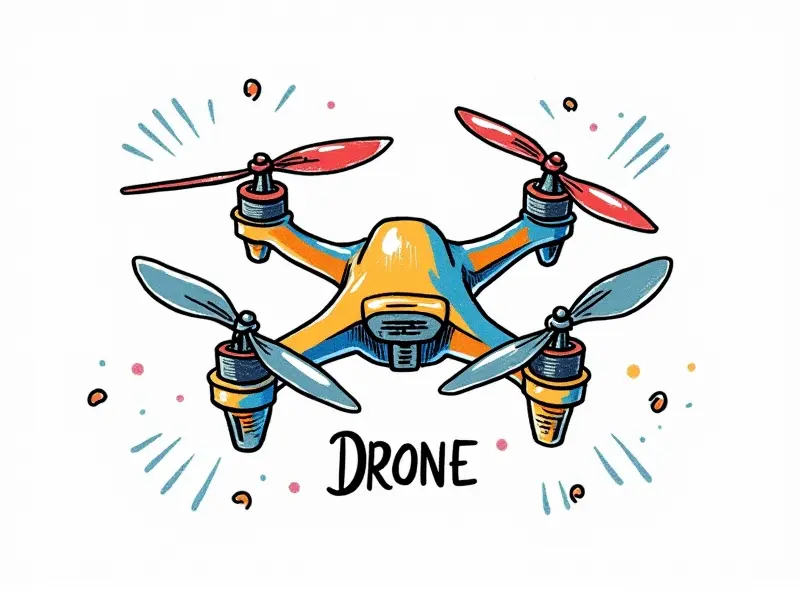Drone GPS range?

Understanding Drone GPS Coverage Area
When it comes to drones, one of the most critical components is the Global Positioning System (GPS). The GPS range determines how far a drone can fly from its operator while maintaining stable communication. Understanding the coverage area of your drone's GPS system is essential for ensuring optimal performance and safety.
Boost Your Drone's GPS Signal Strength
The strength of the GPS signal directly impacts the reliability and accuracy of your drone’s navigation. Here are some tips to enhance your drone's GPS signal:
- Avoid Obstructions: Ensure there are no tall buildings, trees, or other objects blocking the line-of-sight between the drone and the satellites.
- Clear Sky Conditions: Flying in open areas with clear skies provides better satellite visibility for your drone's GPS receiver.
- Update Firmware: Keep your drone’s firmware up-to-date to benefit from any improvements or bug fixes related to GPS performance.
Enhancing Drone GPS Distance Capabilities
To maximize the distance a drone can travel while maintaining reliable GPS communication, consider these strategies:
- Select High-Quality Components: Opt for drones equipped with advanced GPS modules that offer superior range and accuracy.
- Use External Antennas: Some high-end drones allow the installation of external GPS antennas to boost signal reception.
Optimal Conditions for Drone GPS
The performance of a drone’s GPS system is heavily influenced by environmental factors. Here are some ideal conditions for optimal GPS operation:
- Sunny Weather: Clear skies provide the best satellite visibility.
- Avoid Urban Areas: Tall buildings and dense urban environments can interfere with GPS signals, reducing coverage range.
Factors Affecting Drone GPS Range
The distance a drone can travel while maintaining reliable GPS communication is influenced by several factors:
- Satellite Visibility: The number of visible satellites affects the accuracy and reliability of the GPS signal.
- Drone Model: Different drones have varying levels of GPS technology, impacting their range capabilities.
Exploring the Limits of Drone GPS Technology
The limitations of drone GPS technology are primarily dictated by hardware and environmental constraints. While advancements continue to push these boundaries, there are inherent limits:
- Satellite Geometry: The relative positions of satellites in relation to the drone can affect signal strength.
- Signal Interference: Electromagnetic interference from other devices can degrade GPS performance.
Maximizing GPS Coverage for Drones
To maximize GPS coverage, consider these practical steps:
- Choose Open Areas: Flying in open fields or parks with minimal obstructions provides better satellite visibility.
- Monitor Signal Quality: Use built-in tools to monitor the quality of your drone's GPS signal and adjust settings accordingly.
The Impact of Altitude on Drone GPS
Flying at higher altitudes can have both positive and negative effects on GPS performance. At high altitudes, there is less atmospheric interference, which can improve satellite visibility. However, the increased distance from ground-based reference points may introduce additional errors.
Understanding Drone GPS Limitations
While drone GPS technology has advanced significantly, it still faces certain limitations:
- Satellite Availability: In remote areas with limited satellite coverage, the reliability of GPS signals can be compromised.
- Signal Degradation: Over long distances or in challenging environments, signal strength may degrade, affecting accuracy.
How Far Can Drone GPS Go?
The maximum distance a drone's GPS system can reliably operate varies based on several factors. Generally, most consumer drones have a range of around 1-3 kilometers from the operator under ideal conditions. However, this can be extended with advanced equipment and optimal environmental settings.
Enhancing Drone Navigation with GPS
To enhance your drone's navigation capabilities using GPS:
- Utilize Advanced Features: Many drones offer features like waypoint navigation and automated flight paths, which can be optimized for better GPS performance.
- Regular Maintenance: Keep your drone’s hardware in good condition to ensure optimal GPS functionality.
Conclusion
The effectiveness of a drone's GPS system is crucial for safe and efficient operation. By understanding the coverage area, boosting signal strength, enhancing distance capabilities, and optimizing conditions, you can maximize the performance of your drone’s GPS technology. Remember to stay informed about advancements in GPS technology and regularly maintain your equipment to ensure reliable navigation.

